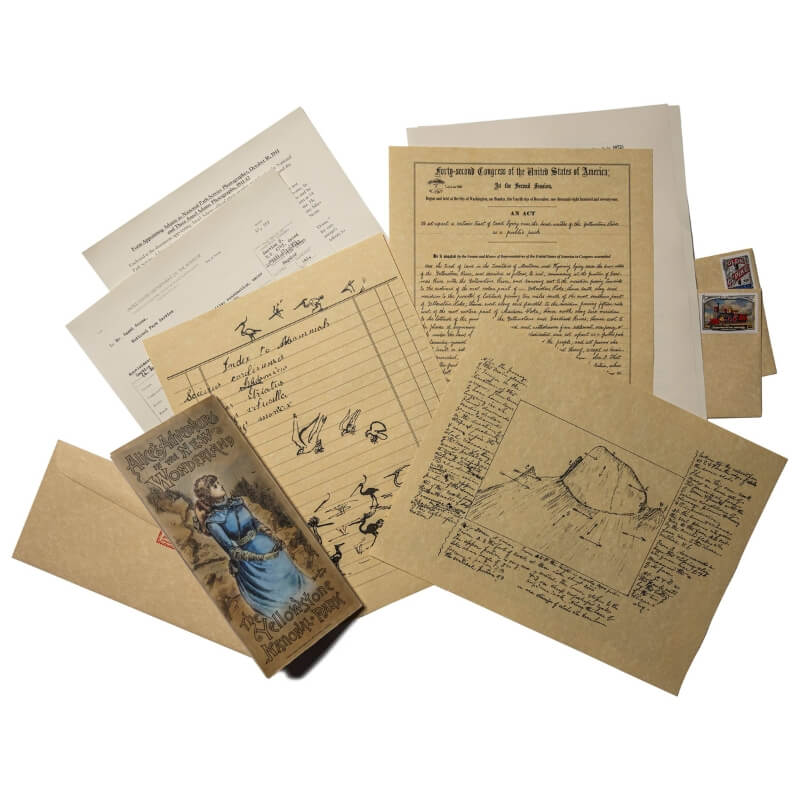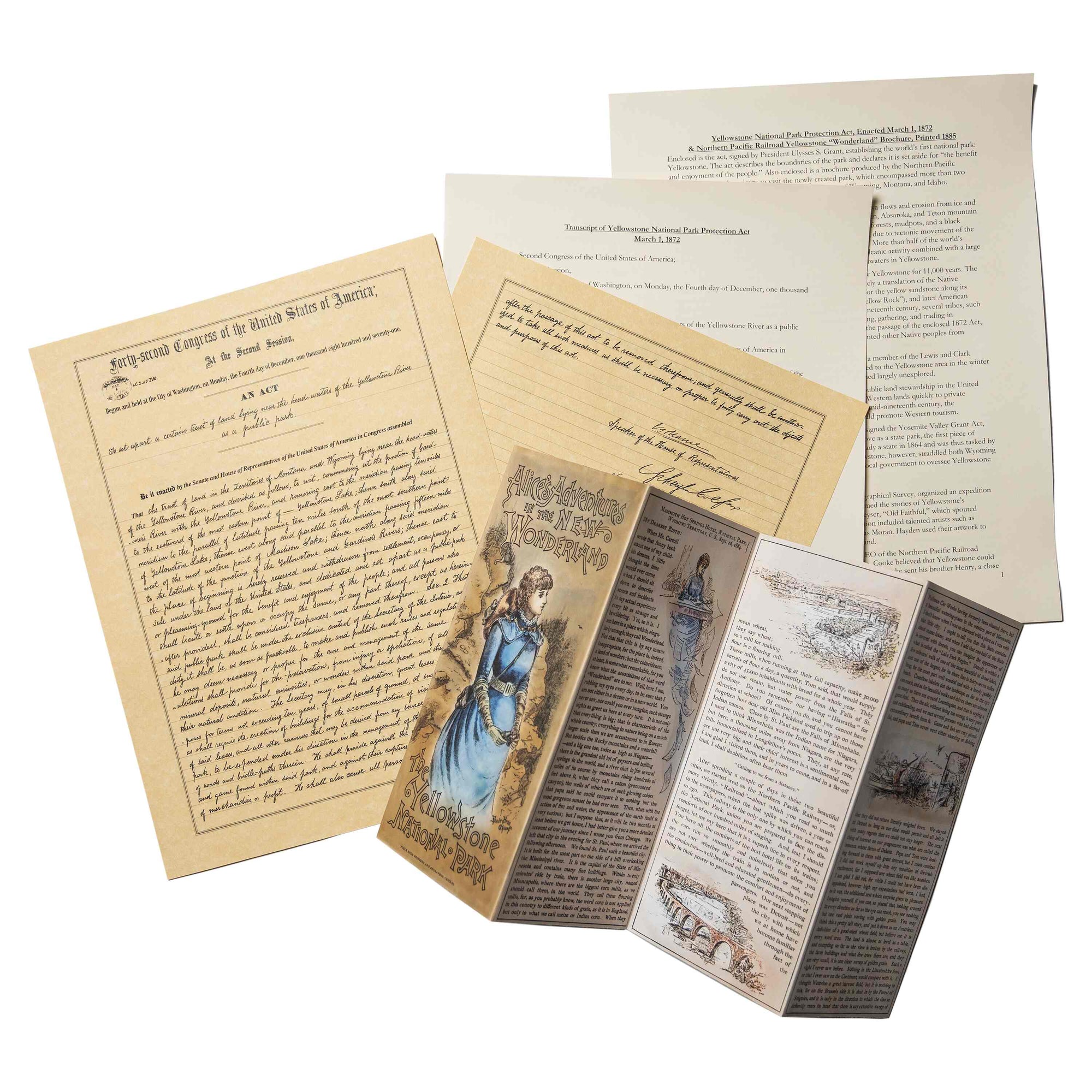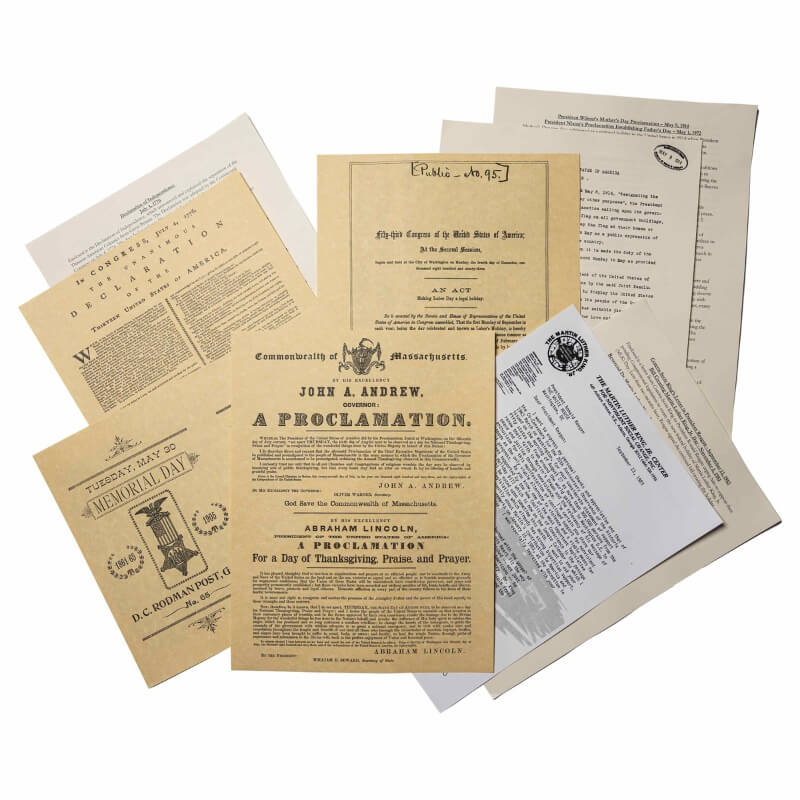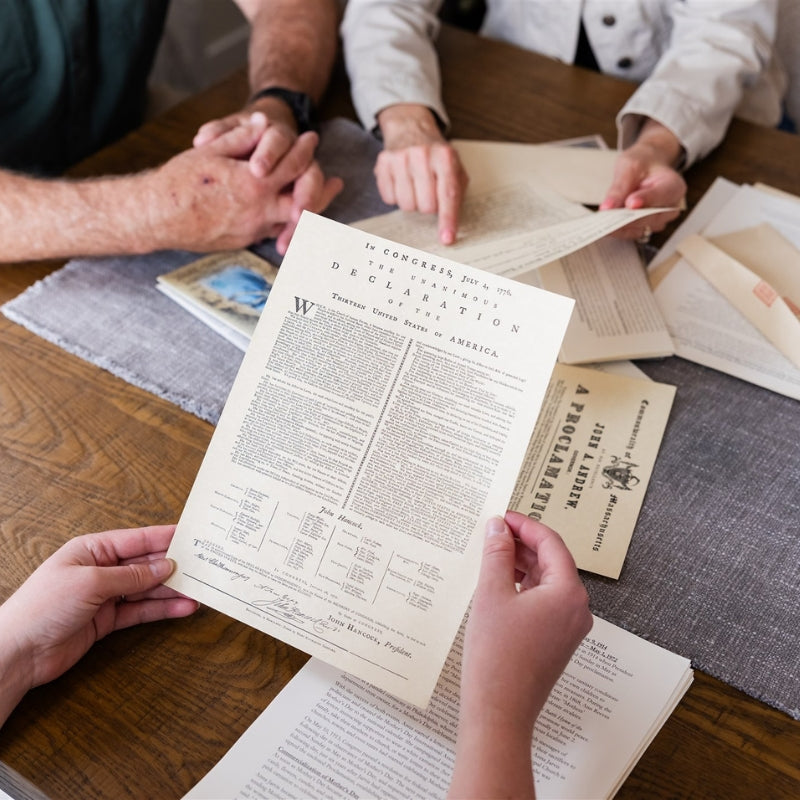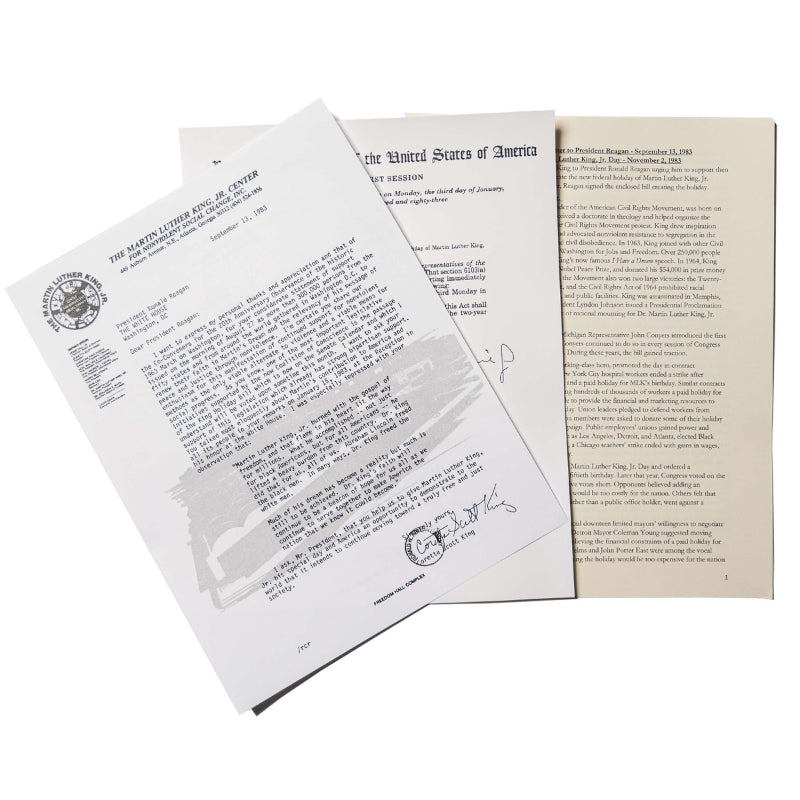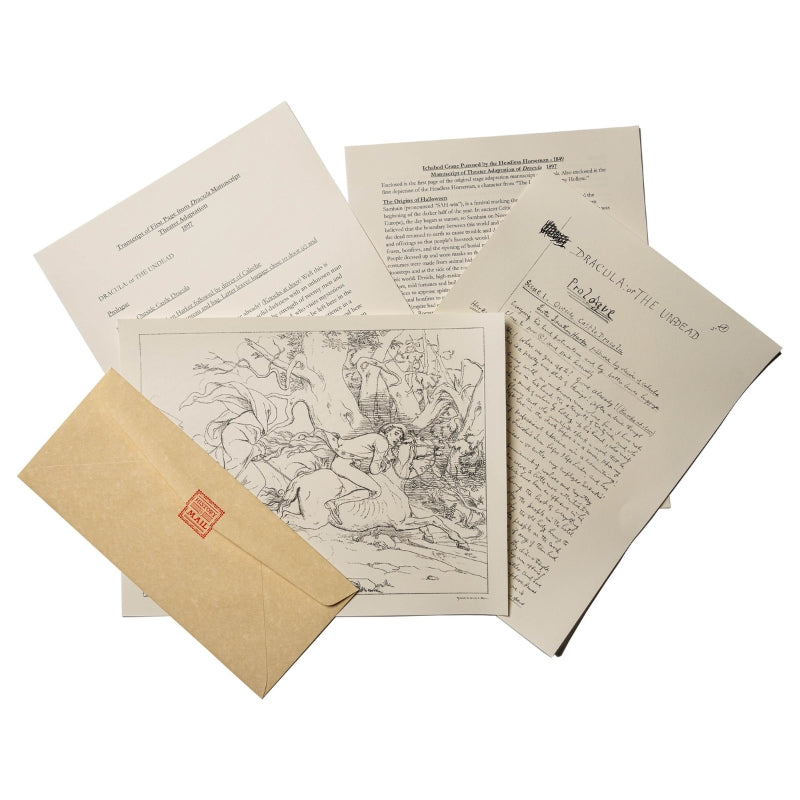The letter below (transcript included) is a message from President John Tyler to Congress, transmitting a letter Tyler had received from John Chamber, the Governor of Iowa Territory. Chamber's letter is a request from the legislative assembly of Iowa, asking for Iowa to be admitted as a state.
On the 4th of July in 1838, the U.S. Congress established the Territory of Iowa, which had a population about roughly 23,000 at the time. A movement quickly emerged within Iowa to push for statehood and less than a decade later on December 28th, 1846 Iowa became the 29th state.
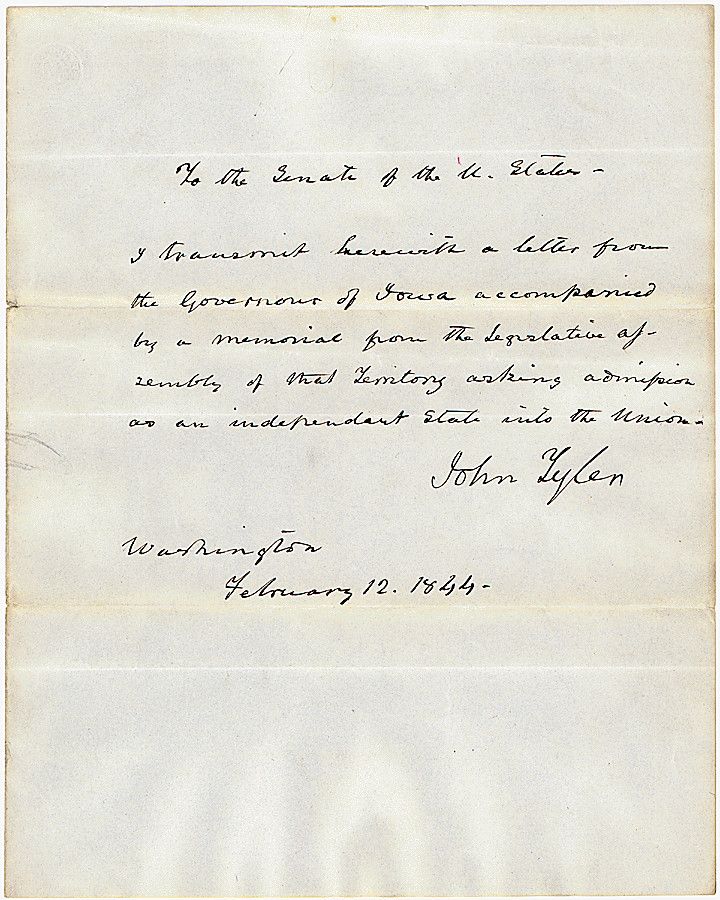
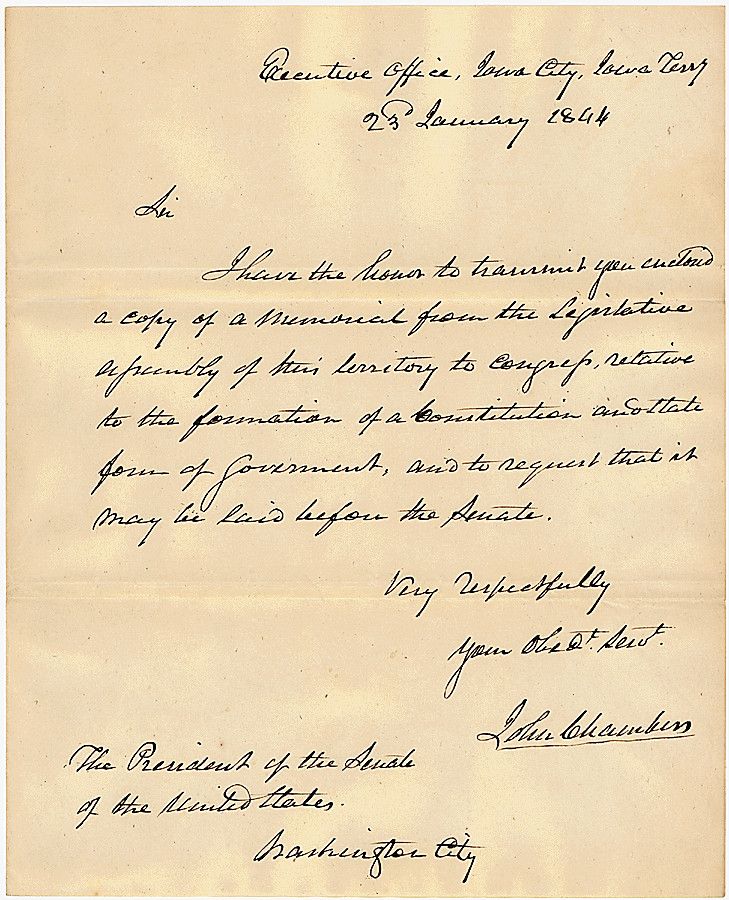
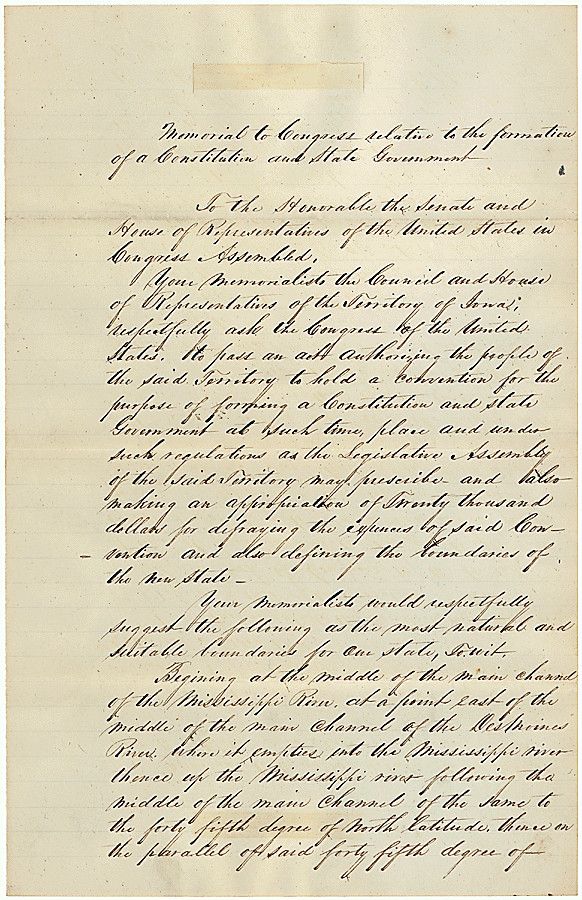
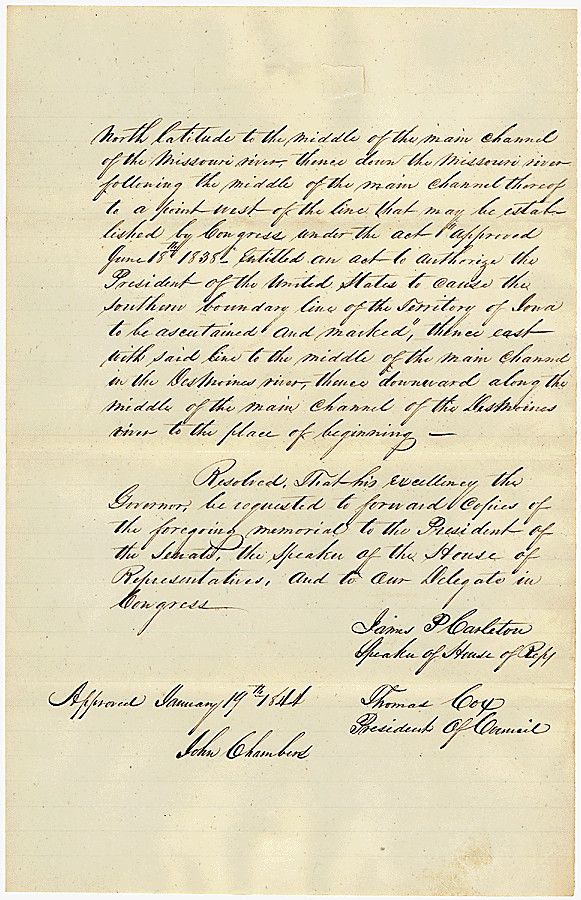
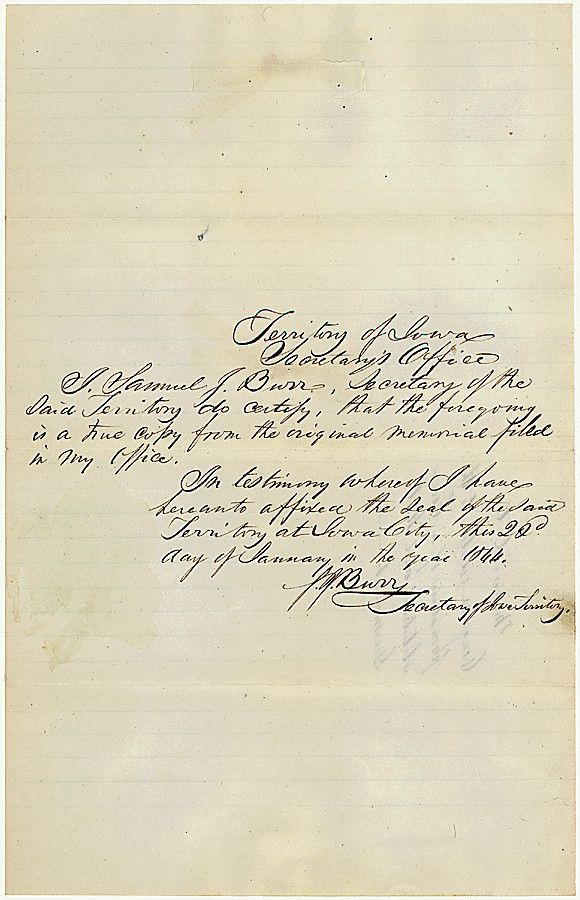
Transcript
To the Senate of the U. States -
I transmit herewith a letter from the Governor of Iowa accompanied by the memorial from the Legislative assembly of that territory asking admission as an independent state into the Union.
John Tyler
Washington
February 12, 1844 -
Executive Office, Iowa City, Iowa Terry
23 January 1844
Sir
I have the honor to transmit your action a copy of the memorial from the Legislative assembly of this territory to congress, relative to the formation of a Constitution and State form of government, and to request that it may be laid before the Senate.
Very Respectfully
John Chambers
The President of the Senate of the United States.
Washington City
Memorial to Congress relative to the formation of a Constitution and State Government-
To the Honorable the Senate and House of Representatives of the United States in Congress Assembled,
Your memorialists the Council and Houses of Representatives of the Territory of Iowa: respectfully ask the Congress of the United States. To pass an act authorizing the people of the said Territory to hold a convention for the purpose of forming a Constitution and State Government at such time, place and under such regulations as the Legislative Assembly of the said Territory may prescribe and also making an appropriation of Twenty thousand dollars for defraying the expenses of said Convention and also defining the boundaries of the new State_
Your memorialists would respectfully suggest the following as the most natural and suitable boundaries for one State, To wit.
Beginning at the middle of the main channel of the Mississippi River at a point east of the middle of the main channel of the Des Moines River where it empties into the Mississippi river thence up the Mississippi river following the middle of the main channel of the same to the forty fifth degree of North latitude, thence on the parallel of said forty fifth degree of
North latitude to the middle of the main channel of the Missouri river, thence down the Missouri river following the middle of the main channel thereof to a point west of the line that may be established by Congress under the act “approved June 18th 1838_ Entitled an act to authorize the President of the United States to cause the southern boundary line of the Territory of Iowa to be ascertained and marked,” thence east with said line to the middle of the main channel in the Des Moines river, thence downward along the middle of the main channel of the Des Moines river to the place of beginning -
Resolved, That his excellency the Governor, be requested to forward copies of the foregoing memorial to the President of the Senate, the Speaker of the House of Representatives, and to our Delegate in Congress _
James P Carleton
Speaker of the House of Rep
Approved January 19th 1844 Thomas Cox
John Chambers President of Council
Territory of Iowa
Secretary’s Office
I, Samuel J. Burr, Secretary of the said Territory do certify, that the foregoing is a true copy from the original memorial filed in my office.
In testimony whereof I have hereunto affixed the seal of the said Territory at Iowa City, this 26th day of January in the 1844.
J. Burr Secretary of Iowa Territory








